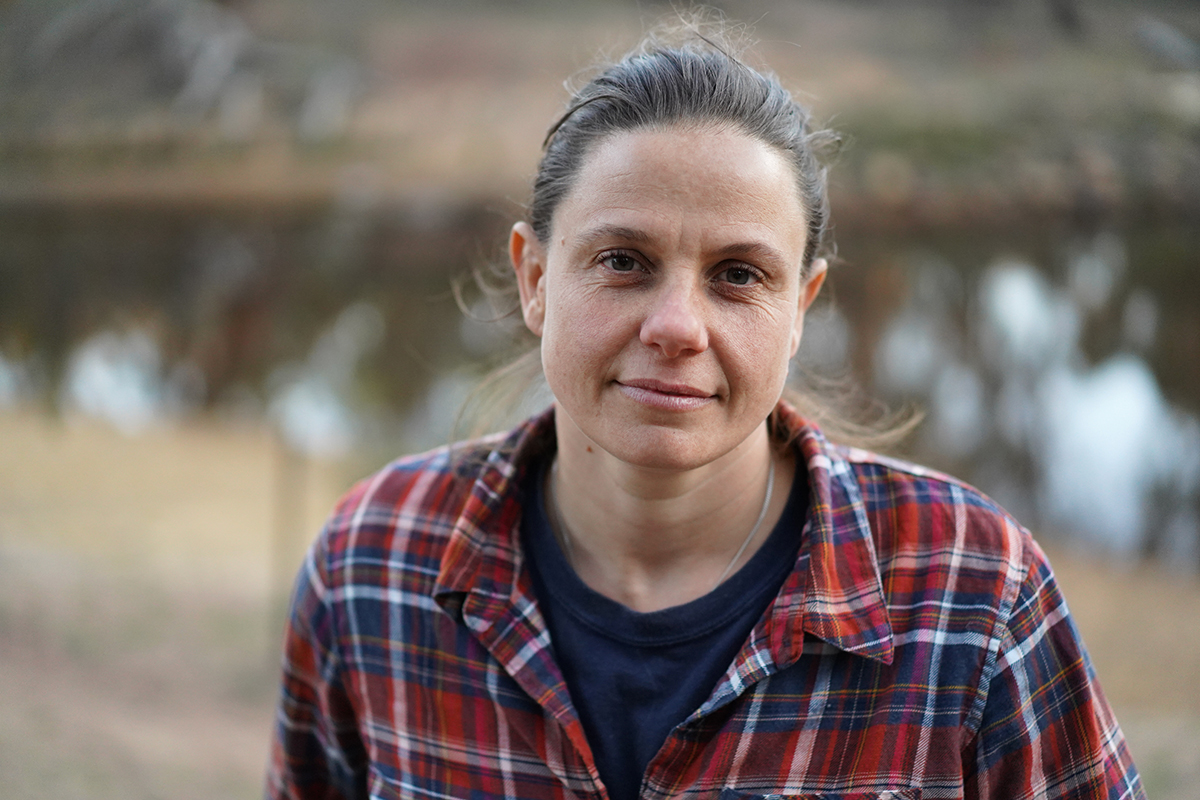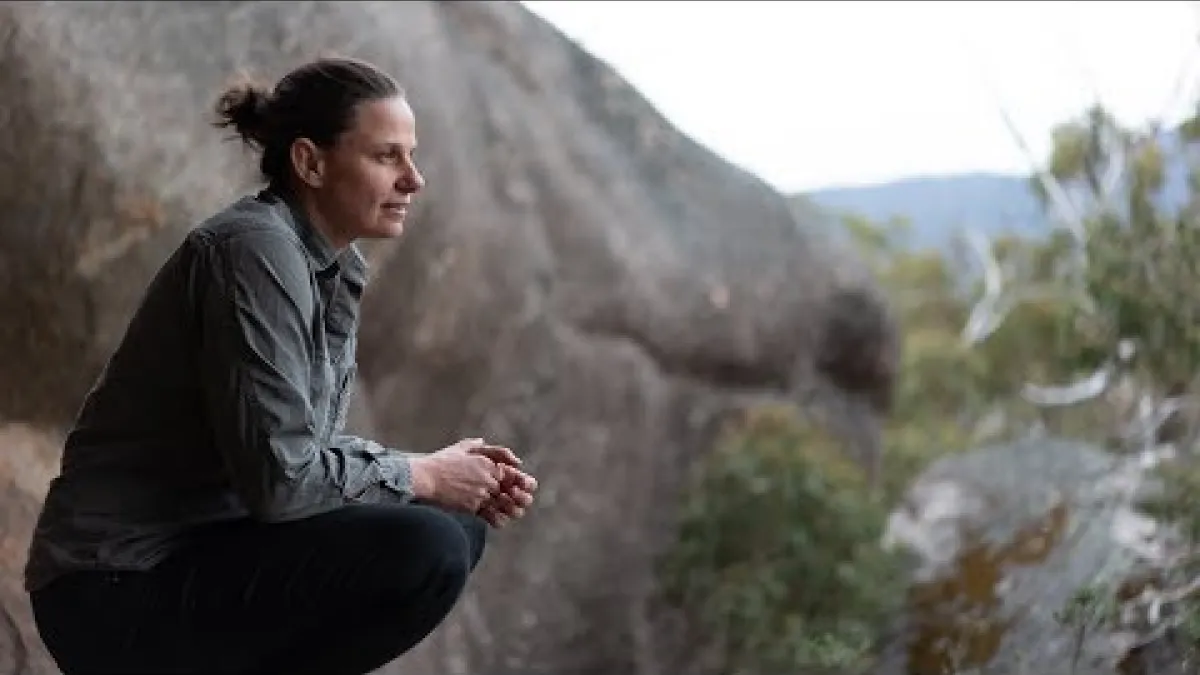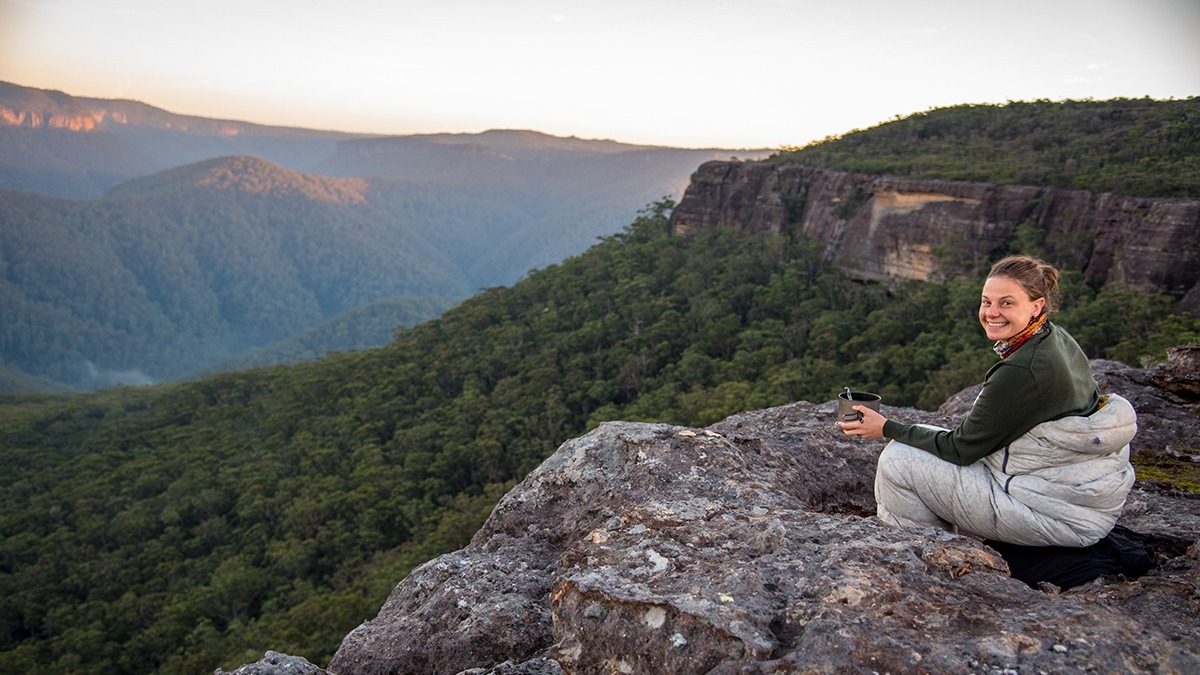Nature is my happy place and I watched it burn. Now I need nature more than ever.

Ecologist and ANU alumna, Dr Kate Grarock, recently spoke on ABC RN's science program, Ockham's Razor, about finding hope and healing after the devastating bushfires. Her inspiring words are reproduced, with permission from the ABC, below. The audio of this talk is also available on the ABC website.
You could say I’m a bit of a hiking fanatic.
I love it, and have walked many of Australia’s iconic trails: Larapinta, Cape to Cape, Kangaroo Island Wilderness trail, to name a few.
In my spare time, when I’m not hiking, I’m an Environmental Scientist. I’ve worked to research and restore the environment and inspire others to love nature at much as I do. Well, perhaps not quite as much as I do.
I currently work on species discovery at Bush Blitz, travelling to remote parts of Australia, looking for new species of plants and animals. It’s mind-boggling that there are still so many species out there that scientists don’t know about.
I can’t imagine a career where I don’t work in nature. I love nature so much, it’s hard understand exactly where that comes from. It is tangled up in so many childhood memories, the good and the bad:
Family holidays to the Grampians, exploring waterfalls and canyons.
As a 14-year-old girl, Mum would drop me at the start of a walk in the morning and meet me in the afternoon 15km down the track and hike out with me.
School camp on my first overnight hike, the teacher encouraged me to take the map and compass and lead the group. I was nervous. But after some encouragement I was actually good at it, and I felt a great sense of achievement navigating my class to our campsite for the night.
Or, at 19, driving to the Grampians on my own after my mum’s funeral, knowing it was exactly where I needed to be in that intense moment of grief.
You see, nature is my happy place. It’s my safety net, and it’s how I know everything will be ok, even when the worst things happen. I’ve always had nature to turn to. When I’m hiking my problems somehow melt away, at least a little.
Life is simple when you’re hiking. All you need to do is walk, eat, sleep, repeat. There is something so good for the soul in reducing your world to such a simple set of tasks, carrying everything you need on your back. And at the end of the day, when I'm staring into the campfire, I feel my cavewoman brain reset and recharge.
I also care more for my body when I’m hiking, I’ve got to - it’s my only mode of transport. I eat carefully, I take time to stretch, I drink lots of water (and, let’s be honest, a heck of a lot less beer). And I sleep amazingly because I’m absolutely pooped.
The natural world is out of our control, and somehow that feels good.
Like in 2016 when I hiked 700km along the NSW coast from Sydney to Mallacoota, I was feeling pretty proud, pretty in-control, when what can only be described as a weather bomb hit me. It collapsed my tarp tent, leaving me with no option but to go full burrito (which basically consists of me wrapping myself and my gear in the tarp like a human burrito).
But you know what? There was nothing more satisfying than making it through the night. Emerging from my burrito, the sun there to warm my skin and dry me off.
Hiking also helps me to appreciate everything I have in my normal life. I feel a bit weird saying it, but I love hiking because it truly makes me appreciate not having to hike anymore. The first shower after three days in the bush is simply magic. And reconnecting with loved ones helps me understand how special they are. I believe happiness comes from appreciating what you have and celebrating the small things in the everyday, and hiking helps me see that.
I’ve always felt such a strong connection to nature. It’s the place I go to recharge my batteries, the place I go when I’m hurting the most and have nowhere else to go.
And since moving to Canberra 13 years ago, my go-to nature place has been an area called the Budawangs. They remind me of the Grampians, but they are much more wild and challenging. You almost always get a little lost in there. The cliff lines and rock formations are simply breathtaking; the deep river gorges and rainforest patches make you feel like an explorer, with names like Shrouded God’s Mountain and Hidden Valley, to really spark that sense of adventure.
I love the Budawangs. But in December last year the long-burning NSW fires ripped through my happy place. And it’s had a huge impact on me.
These unprecedented bushfires not only highlighted the impact of our changing environment, and our lack of action on climate change, they ripped through the place I go to restore and recover from the stress of everyday life.
My thoughts were with all the creatures great and small; the people living in the surrounding areas; that tiny pygmy-possum – the size of a mouse – that I found living in a fallen tree; and the amazing wilderness I had spent so many days and nights with.
But the fires didn’t stop there. It felt like they followed me home for Christmas in South Australia, where they devastated Kangaroo Island, another magnificent wilderness area and hiking spot.
On New Year’s Eve, as I sweltered in 46 degrees, I was glued to Twitter watching the devastation unfold in Mallacoota. I got goose bumps as people fled the fires. I was terrified for the impact on a truly wild area; a place where I once saw ground parrots feeding, and a beautiful dingo wandering up the track.
The smoke pollution in Canberra was so bad I couldn’t even return home.
I needed my happy place more than ever, but it wasn’t safe to go there. I had to endure without my safety net. The only thing that kept me going was the glimmer of hope that one day, some time, eventually, these fires would stop burning. Wouldn’t they?
But what would be left of these magnificent areas I once knew?
Back at work, and it was hard to concentrate. No-one got the opportunity to relax and recharge over the Christmas break.
Then, in January, an epic hailstorm ripped through Canberra and decimated the Australian National Botanic Gardens, where I work. We were gutted.
Our bosses organised a counsellor to come in and speak to us.
At first, a group counselling session felt a bit weird and awkward. Then, when one of the big burley rangers spoke up about witnessing the hail rip through the one special place he had left, after watching the fires rip through NSW, I lost it. I quietly wept. Embarrassed about crying at work, I tried to hide my tears. But as I turned around, I saw that my many of my colleagues were also crying.
And then it clicked. It was okay to feel an overwhelming sense of loss, of grief, for what was happening. Grief for our planet. Grief for all the burnt areas. And grief for our special places.
My environmental science friends are feeling so deflated, so helpless and, at times, directionless. What’s the point in our work when it can all be wiped out in just one summer?
As we slowly pick ourselves back up, we now see there has never been a more important time to work together to help in the recovery.
My big hope from all this destruction, loss and devastation, is that we use it as a wake-up call.
We have lived through just a taste of what life might be like if things don’t change. So I hope this kicks people into action on all levels to demand a better future.
With my precious Budawangs out of bounds, I’ve been getting my nature fix in small doses where I can: walks in nature reserves near my house, or little car-camping trips to unburnt areas.
But I need a hike. I’m going to get back out there as soon as I can, as soon as it’s safe to do so.
Right now, more than ever, I need that hiking/nature euphoria. I need to fall asleep when it gets dark, to sleep under the stars and wake up with the birds. More than ever I need nature to heal me.
And I need to see the recovery begin, to witness the incredible power of nature. There is nothing like a tiny green shoot in a blackened field to signal hope. That’s what I need right now: a signal of hope. That’s what we all need: that glimmer of hope that everything will be ok.
I know things will never be the same again, but I also know that nature is truly amazing, and if we give it even the smallest reprieve or assistance, it is absolutely incredible at recovering.
Dr Grarock completed a PhD in environmental science at the ANU Fenner School of Environment and Society, researching the effective management of introduced species. She is a SuperStarofSTEM, a 2018 Eureka Prize finalist and 2019 ACT Australian of the Year finalist.
Dr Kate Grarock in the Budawangs. Image: Lachlan Shaw.




